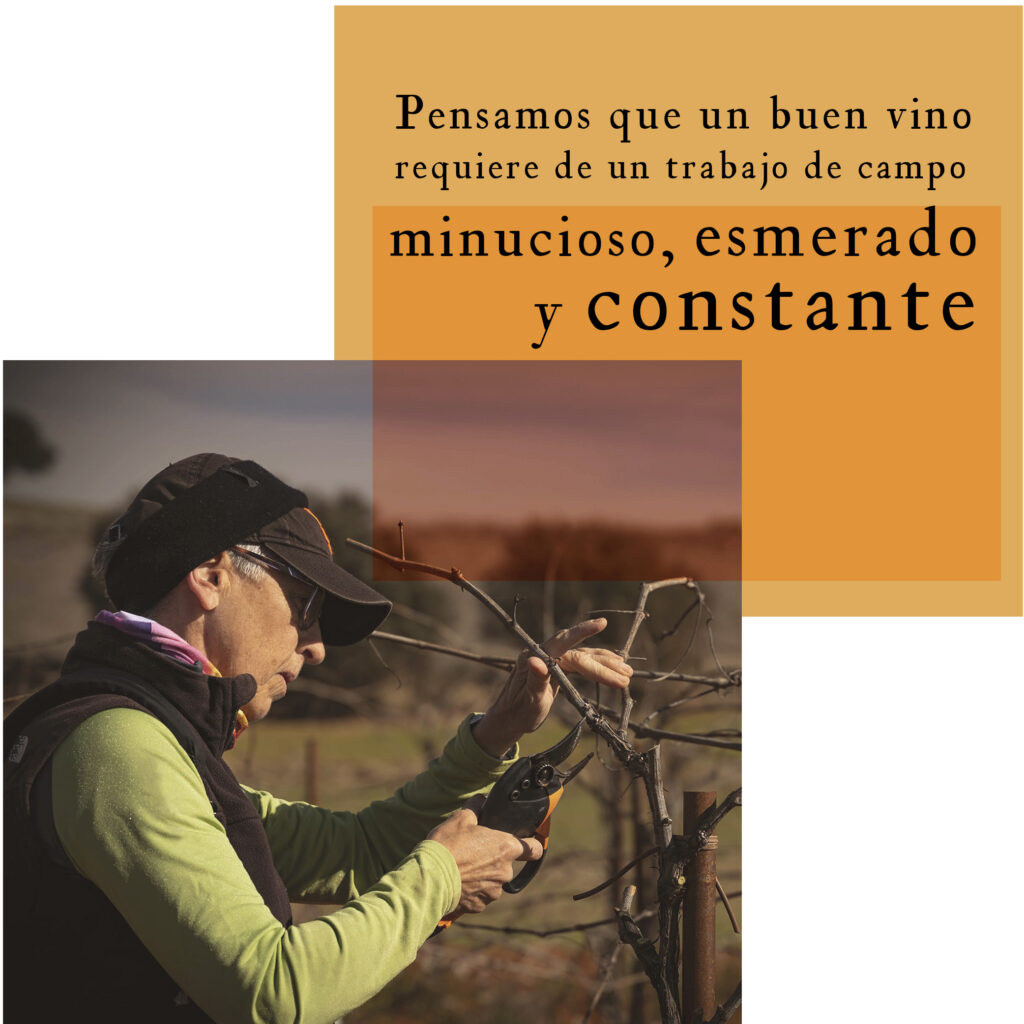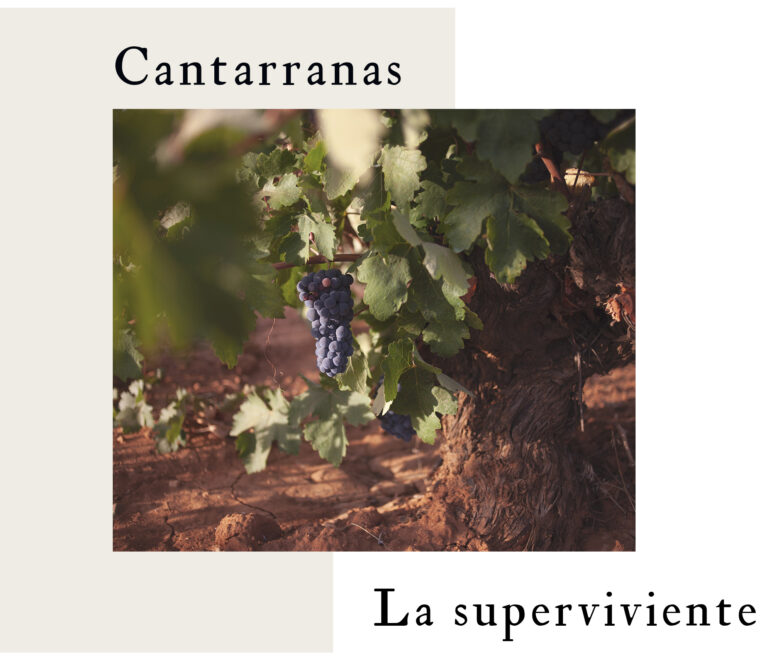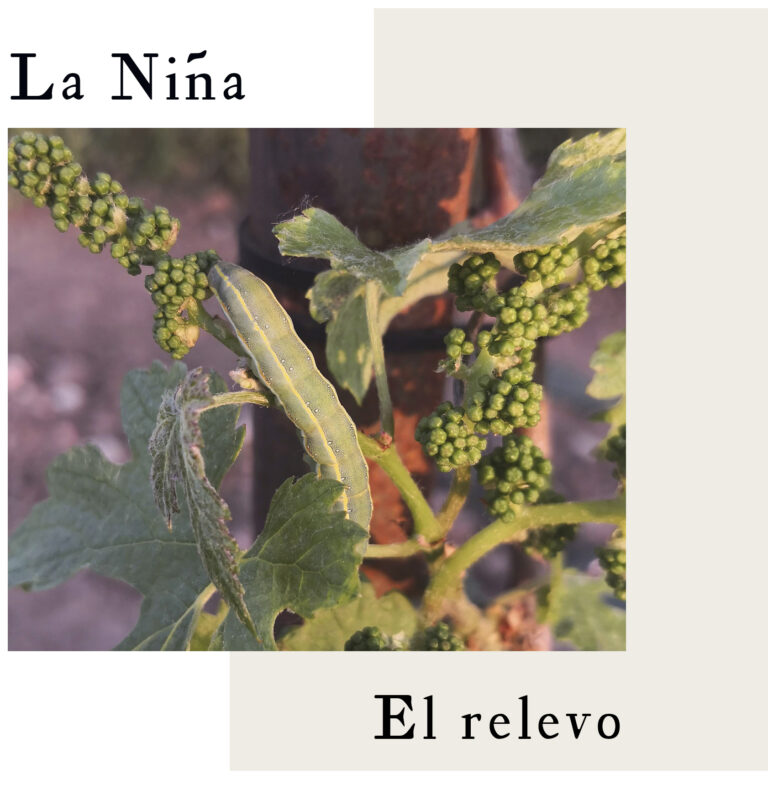Our grapes come from 4 hectares of our own vineyards that we cultivate respecting the environment in which they grow. There are 3 plots: Cantarranas (90 years old), La Niña (planted in 2016) and Las Monjas (planted in 2019) located in the town of Mondéjar at an altitude of more than 800m. Para algunas añadas recurrimos a uva de viticultores ecológicos locales que aman sus viñas como nosotros y que se implican en nuestro proyecto.
We believe that a good wine requires meticulous, careful and very constant field work.
We work the vineyard in a traditional and sustainable way. This allows us to get to know our plots up close and learn from them with each vintage.
We do not use pesticides, herbicides, systemic treatments or chemical fertilizers. We carry out organic treatments only when necessary, which means that we are always in the vineyard observing and understanding.
Hacemos tanto la poda en seco como la poda en verde concentrándonos en la salud de la cepa y en la calidad de la fruta, no en el volumen de producción. Buscamos que sean viñedos “eternos”.
We harvest exclusively by hand since the conduction system conditions us, our vines are cultivated in goblet (those over 90 years old) or vertical axis (the young ones) to help them better adapt to the climatic characteristics of our area.
Nuestra uva proviene de 4 hectáreas de viñedos propios que cultivamos respetando el medio donde están. Son 3 parcelas: Cantarranas (90 años), La Niña (5 años) y Las Monjas (2 años) situadas en el pueblo de Mondéjar a más de 800m de altitud. Para algunas añadas recurrimos a uva de productores ecológicos locales que aman sus viñas como nosotros y que se implican en nuestro proyecto.
We believe that a good wine requires meticulous, careful and very constant field work.
We work the vineyard in a traditional and sustainable way. This allows us to get to know our plots up close and learn from them with each vintage.
We do not use pesticides, herbicides, systemic treatments or chemical fertilizers. We carry out organic treatments only when necessary, which means that we are always in the vineyard observing and understanding.
Hacemos tanto la poda en seco como la poda en verde concentrándonos en la salud de la cepa y en la calidad de la fruta, no en el volumen de producción. Buscamos que sean viñedos “eternos”.
We harvest exclusively by hand since the conduction system conditions us, our vines are cultivated in goblet (those over 90 years old) or vertical axis (the young ones) to help them better adapt to the climatic characteristics of our area.

The plots

Planting date: 1938
Area: 1,62 ha
Conduction system: Gobelet
Orientation: East
Soil: Clay loam
Grape variety: Tempranillo (70%) , Airén and Torrontés.
Planting density: 1.275 plants/ha
The history of this vineyard begins almost a century ago. In the place they call Cantarranas, a few hectares of Tempranillo were planted. The planting was staggered to allow the plow to pass in all directions. As was customary, along with the Tempranillo, Airén and Torrontés vines were also planted, not many, just enough to give the red its freshness because all the varieties were harvested and vinified together in clay jars.
90 years later, of all the hectares of vines that were planted that end of winter, very few remain. They are old vines, with an imposing trunk, twisted on themselves. Droughts, plagues, subsidies for uprooting vines have brushed past them. They have changed hands and only those vineyards whose owners have been able to recognize their potential have survived.

Planting date: 2017
Area: 1 ha
Conduction system: Vertical axis
Orientation: East
Soil: Clay loam
Grape variety: Tempranillo
Planting density:: 2.778 plants/ha
La Niña and Cantarranas are a few meters away. La Niña perpetuates the project of La Era and is a commitment to the place that has seen the birth of our old Cantarranas. But La Niña is born with improved patterns, conducted on a vertical axis, respectfully pruned and organically farming from the beginning. It has all the ingredients to be one of the region's great vineyards in this 21st century.

Planting date: 2018
Area: 1,3 ha
Conduction system: Vertical axis
Orientation: Suroeste.
Soil: Clay loam
Grape variety: Tempranillo and Cabernet Sauvignon.
Planting density: : 2.778 plants/ha
Another soil, another setting, another microclimate and other varieties... located 6 km from the other two, Las Monjas is planted with a more specific purpose in mind. It is the first vineyard that we planted with a clear vocation as winemakers. More than half of the plot is Cabernet Sauvignon with the intention of providing us with other notes to play with in the cellar. We want freshness and acidity for our Tempranillos but without taking away their body.
As in La Niña, we are went for vertical axis conduction and organic farming from the first minute.
Village wine. Wine village.
Support a sustainable project that revitalizes the countryside and the region.

